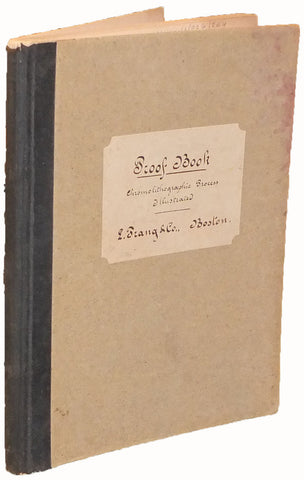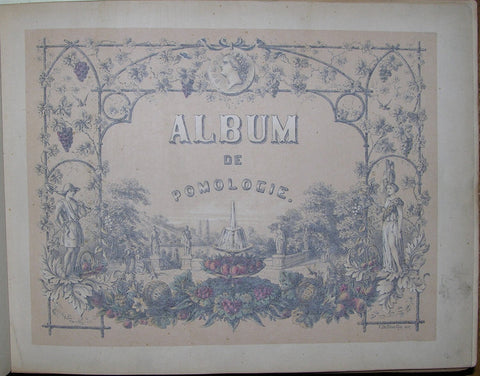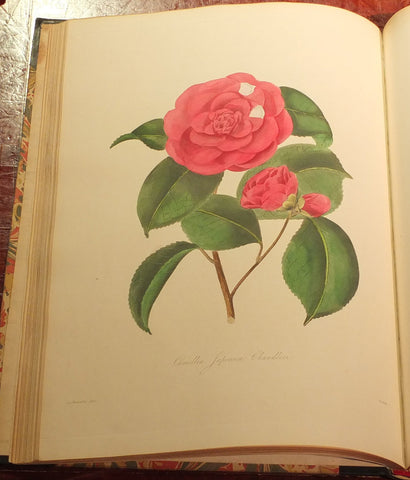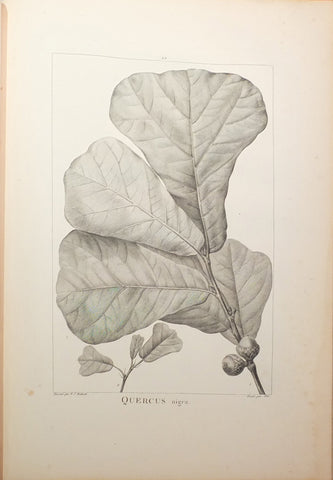Louis Prang (1824-1909), Proof Book Chromolithographic Process Illustrated
Louis Prang (1824-1909)
Proof Book Chromolithographic Process Illustrated
Boston: L. Prang & Co., c. 1878
4to., (9 7/8 x 5 5/8 inches). 24 plates, comprising the proofs of each separate color and proofs of each stage of the 12-color chromolithograph Iris Versicolor, a plate from Meehan’s “Native Flowers and Ferns” (pale red stain along the foreedge, not affecting images). Original publisher’s cloth-backed paper boards, with manuscript lettering piece to the front cover (some faint staining).
Provenance: Swann Galleries, Printed & Manuscript Americana, February 2, 2006, Sale 2065, Lot 209.
Progressive proof book by the Prussian immigrant known as the “father of the Christmas card.” This particular proof book shows the process of creating the 12-color chromolithograph of Iris Versicolor, which was published in Thomas Meehan’s “The Native Flowers and Ferns of the United States in their Botanical, Horticultural, and Popular Aspects” (Boston: L. Prang and Company, 1879). It was intended to show both the public and potential clients the intricate step-by-step process of creating a chromolithograph, with facing plates showing the individual color introduced on the left and the cumulative effect on the right. It ends with the finished plate, with the imprint “Copyright 1878 by L. Prang & Co. Boston, U.S.A.”
Louis Prang was a strong proponent of chromolithography, despite resistance from the artistic community, believing that quality art should not be the exclusive purview of the elite. He was “born on March 12, 1824 in Breslau in what is now Poland. He was the only son among the seven children of a French Huguenot father Jonas Louis Prang and a German mother, Rosina Silverman. Louis Prang learned to dye and print calico as an apprentice in his father’s shop. After traveling as a journeyman in Europe, he became involved in revolutionary activity against the Prussian government in 1848. Prang went to Switzerland, emigrated [sic] to the United States and settled in Boston in 1850, marrying Rosa Gerber in the following year.
“Between 1848 and 1856, Prang supported himself by making wood engravings to illustrate various publications. In 1856, he joined with Julius Mayer and formed the partnership of Prang and Mayer, lithographic and copper plate manufacturers. The business continued until 1860 when Prang became sole owner, changing the name to L. Prang and Co. The firm printed business cards, announcements and other forms of ephemera and soon branched into the production of maps of Civil War sites and novelty items including albums and sets of picture cards decorated with a wide variety of images that became popular collectibles.
“In 1864, Prang visited Europe to study the latest techniques in German lithography. He returned to Boston to create high quality reproductions of major works of art using a lithographic process he called ‘chromos.’ In 1874, he began producing greeting cards for the popular market in England and began selling the Christmas card in the United States the next year, resulting in his being called the ‘father of the American Christmas card.’ Also in 1874, Prang began publishing books for drawing and elementary art study for public schools. This latter activity proved so successful that he formed the Prang Educational Company in 1882. During this time, Prang shared his residence and his work with the family of his son-in-law, lithographer Karl K. Heinzen, who married Prang’s daughter Rosa.
“Through a merger in 1897, L. Prang and Co. became the Taber-Prang Company and moved from Boston to Springfield, Massachusetts. Two years following the death of his first wife in 1898, Prang married Mary Dana Hicks, an art teacher and author associated with the Prang Educational Company. Prang had retired from active business in 1899 and traveled extensively for the next decade. He became ill and died while en route to view an Exposition in Los Angeles in 1909 (Archives of American Art online).
We Also Recommend














